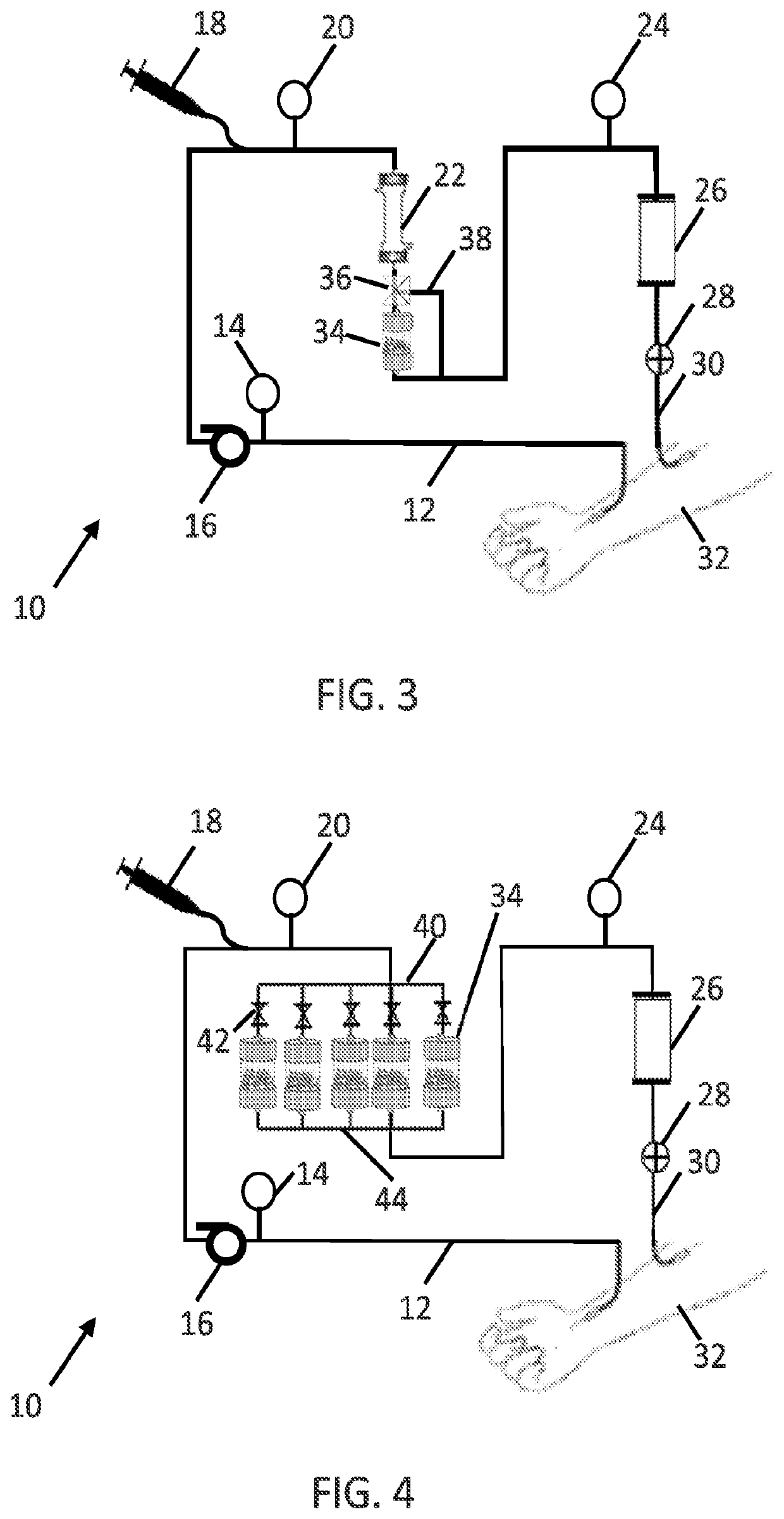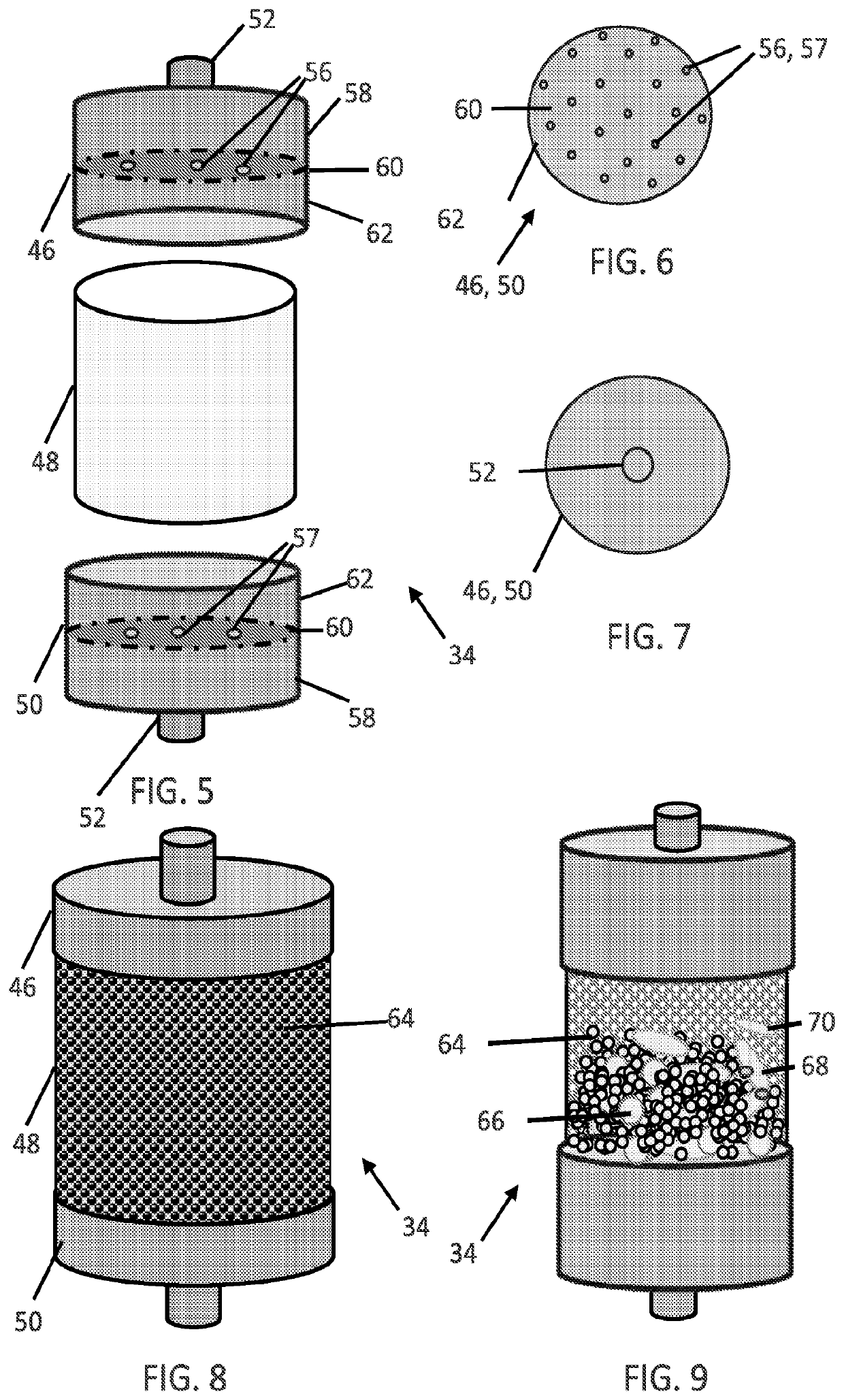Methods and systems for treating microbial disease
- Summary
- Abstract
- Description
- Claims
- Application Information
AI Technical Summary
Benefits of technology
Problems solved by technology
Method used
Image
Examples
example 4
[0200]Assuming the same variables as Example 1, except the flow rate is increased to 1200 ml / min after 1 hour, less than 1 CFU of bacteria would be left in the patient after 2 hours.
Treatment TimeNumber of BacteriaPercent of original(hours)(CFU)Bacteria0500000100.000%0.25240353 48.071%0.5115539 23.108%0.7555540 11.108%126699 5.340%1.251293 0.259%1.563 0.013%1.753 0.001%20 0.000%
example 5
[0201]Assuming the same variables as Example 1, except the efficacy per pass is increased to 95% after 1 hour, less than 1 CFU of S. aureus would be left in the blood after 4.5 hours.
Treatment TimeNumber of BacteriaPercent of original(hours)(CFU)Bacteria0500000100.000%0.25240353 48.071%0.5115539 23.108%0.7555540 11.108%126699 5.340%1.2511730 2.346%1.55153 1.031%1.752264 0.453%2995 0.199%2.25437 0.087%2.5192 0.038%2.7584 0.017%337 0.007%3.2516 0.003%3.57 0.001%3.753 0.001%41 0.000%4.251 0.000%4.50 0.000%
[0202]The blood flow rate may be steady or variable over the course of the treatment. Flow rates may be optimized to remove pathogens as quickly as possible, which may not necessarily result in higher flow rates equating to higher removal rates (since blood residence time within the filter cartridge 34 (and / or hollow fiber membranes 100) also has an effect on removal rate). Flow rates around 300 ml / min can be obtained peripherally at the femoral or jugular access points, while flow ra...
constructive examples
[0214]The following examples are provided to illustrate, but not limit, the claimed invention.
PUM
| Property | Measurement | Unit |
|---|---|---|
| Length | aaaaa | aaaaa |
| Length | aaaaa | aaaaa |
| Length | aaaaa | aaaaa |
Abstract
Description
Claims
Application Information
 Login to View More
Login to View More - R&D
- Intellectual Property
- Life Sciences
- Materials
- Tech Scout
- Unparalleled Data Quality
- Higher Quality Content
- 60% Fewer Hallucinations
Browse by: Latest US Patents, China's latest patents, Technical Efficacy Thesaurus, Application Domain, Technology Topic, Popular Technical Reports.
© 2025 PatSnap. All rights reserved.Legal|Privacy policy|Modern Slavery Act Transparency Statement|Sitemap|About US| Contact US: help@patsnap.com



